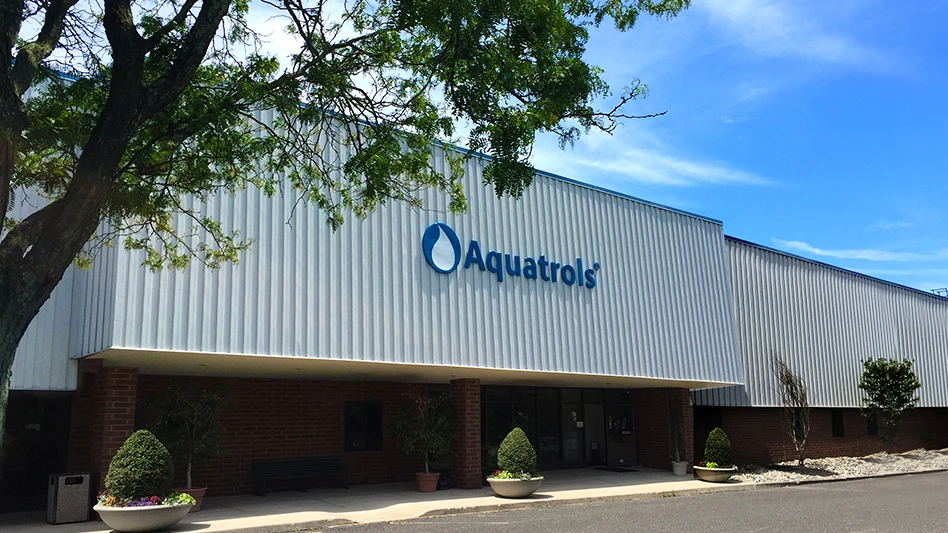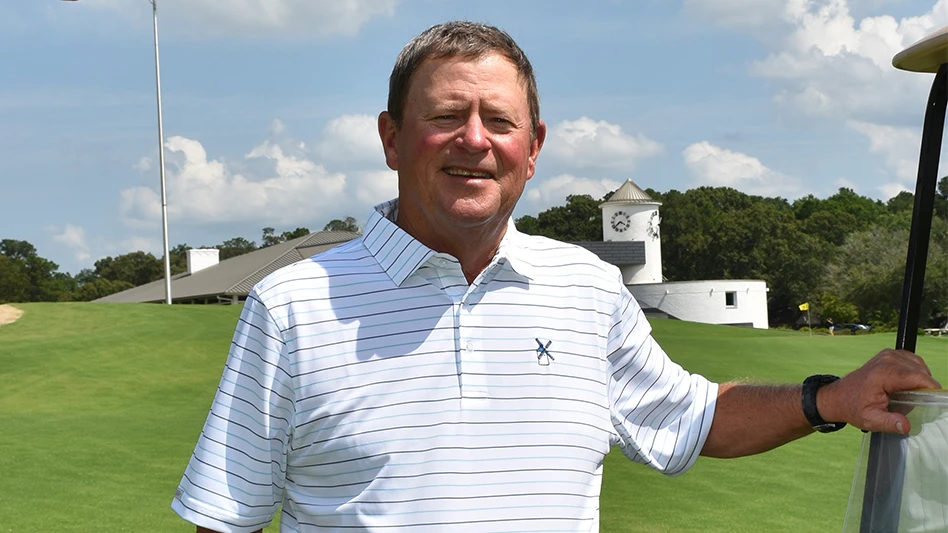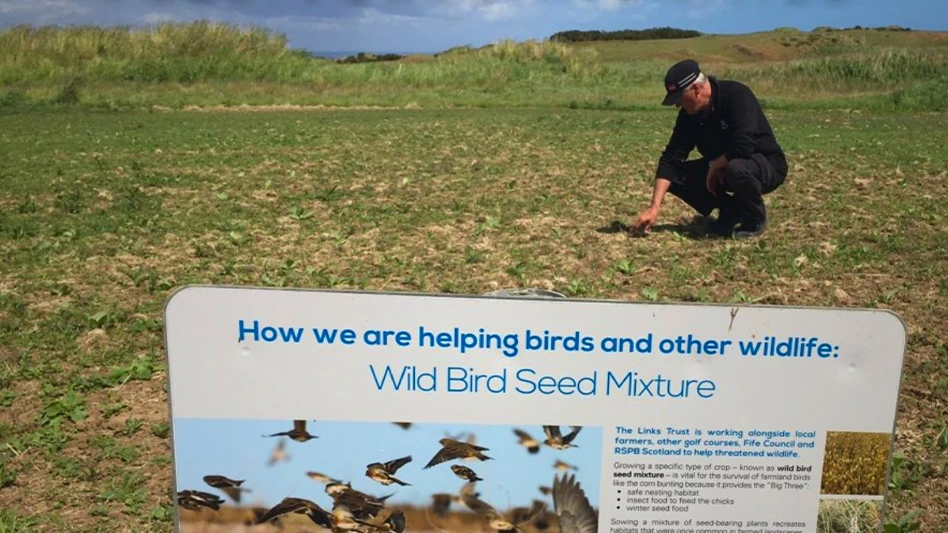Being a golf course superintendent at a new course can be more challenging than being a superintendent at a course that’s been established. Hours are longer, and preparation is more involved. A superintendent doesn’t have to have grow-in experience to get a job opening a new course, but successfully opening a new course is a significant accomplishment to put on a superintendent’s resume. He’s proven he can oversee a grow-in. Such is the case with John Johnson, superintendent at Winterstone Golf Course in Independence, Mo.; Gregg Gomes, superintendent at Antler Creek Golf Course in Peyton, Colo.; and Mike Giddens, superintendent at the 9-hole First Tee of Lakeland YMCA in Florida.
Previous experience
Neither Gomes nor Giddens had previous experience executing a grow-in before taking their current positions. Johnson had some experience before taking the job at Winterstone, but not as the superintendent in charge. Before Johnson came to Winterstone, he was an assistant at Prairie Highlands Golf Course in Olathe, Kan., for two years, and before that spent two years at Loch Lloyd Country Club in Belton, Mo.
|
|
Gomes previously worked at the Santa Ana Golf Club in Santa Ana Pueblo, N.M., and before that worked in Colorado for seven years. Although he never did a grow-in before Antler Creek, he felt he was very strong agronomically and had enough friends that had done grow-ins.
Before he was hired at First Tee, Giddens worked at the private, 18-hole Lone Palm Golf Club in Lakeland for three and a half years as an equipment operator. He was one of 20 guys on staff. While at Lone Palm, he also was in school earning a degree in turfgrass management. He graduated in December 2004 from Florida Southern College in Lakeland.
Giddens’ connection to First Tee started with an inauguration event for the contributions made by the U.S. Golf Association to the First Tee of Lakeland YMCA. Golf course architect Steve Smyers and his wife, Sharon, also were involved with raising money for the golf course project.
“I was interested in volunteering and went to talk to Alice Collins, the president and c.e.o. of the YMCA for this region, and Steve and Sharon and I explained my situation to them,” Giddens says. “My name was mentioned during the superintendents committee, which was looking for a superintendent for the facility. They asked me and said it was my job to lose.”
There are three superintendents on the committee who were selected by the YMCA to oversee the facility.
|
|
“I’ve never done a grow-in before,” he says. “I was involved with a small grow-in of a nursery green at Lone Palm, but nothing to this extent. Not everyone gets to start at a new course from scratch and see it through all the way. However, some superintendents might have knowledge about what to do with a grow-in, even though they haven’t done one.”
Giddens completed an internship with John G. Walton Construction last summer that provided him with some grow-in experience.
First timer
The First Tee course was previously an 18-hole par-3 course that closed about three years ago. The facility was built in 1965 and was owned by George Jenkins, founder of the Publix supermarket chain. Publix owns the land now, and the YMCA operates the facility. Giddens reports to an executive director of the YMCA.
The course, which also has a driving range, opened last month. It was scheduled to open November of last year, but was delayed because of the four hurricanes that blew through Florida. Grassing started in October 2004. Giddens says he took it day-by-day and week-by-week and wasn’t pressed to meet a deadline.
With a budget of $120,000, Giddens doesn’t have much to work with and depends on volunteers and help from other area courses to maintain the First Tee.
“Right now, I have a volunteer staff of three, but I’m in the process of hiring one full-time person and two part-time workers,” he says. “One of my temporary employees is a Champions Tour caddy.
“I was using equipment from other courses,” he adds. “And the industry has stepped up. One superintendent on the committee talked to Toro, and the company let us use equipment that was part of a grow-in package. Toro will keep some of the equipment, and then I’ll purchase some equipment from them. Additionally, some courses have donated older pieces of equipment.”
The lighting and netting for the driving range also was donated.
The First Tee course features Jonesdwarf Bermudagrass on the greens and Celebration Bermudagrass on the fairways, tees and approaches. The course was sprigged except for the greens surrounds, which were sodded.
|
|
Settled down
Winterstone, which opened in May 2003, was built over an active limestone mine that’s 50 to 100 feet below the ground’s surface. And every day at 3:15 p.m., the ground shakes because of the mining, which can cause problems.
“My first year had a lot of irrigation blowouts, but last year I didn’t have any,” Johnson says.
During the construction of a new course, a superintendent usually is brought in when irrigation heads are being installed, according to Johnson, who flagged all the heads at Winterstone.
“The last thing we did was seed greens in August,” he says. “From September of ’02 to May of ’03, we were in grow-in mode,” adding that the staff still prepared the course a bit after it opened.
|
|
The green fees for Winterstone, which doesn’t have any houses around it, are $59 on weekends and $54 during the week. The public course generated 28,000 rounds last year, and management wants to generate 30,000 to 35,000 rounds this year. The course is open all year round if there isn’t frost or snow.
“Even if it’s 30 degrees and windy, we’ll let golfers play if they want to,” Johnson says.
Now that the course is up and running, Johnson says he would consider another job.
“I would pack up and move, but I wouldn’t mind staying here,” he says.
Western opening
The 18-hole daily fee Antler Creek course, which features Dominant Extreme bentgrass on the greens and a dwarf bluegrass/fescue mix on the rest of the course, opened last year. The course had a soft opening Sept. 3, 2004, and the grand opening will be July 3 2005.
Gomes, who has four full-time people on staff and 20 part-time workers in the summer, says this job is a step above his last one and he feels more pride in it. He says the main reason for the move was to do a grow-in.
“This course is like my baby,” he says.
Gomes’ biggest challenge with the grow-in was that he did it without a pump station. He used gravity fed water and worked through that for five months. Because of the lack of pressure, the irrigation heads became clogged and stuck. Gomes says 70 to 80 pounds of pressure is needed and he only had 50 pounds. The 2,000 irrigation heads we’re fixed manually, and the lines were flushed, but there wasn’t enough pressure to completely flush lines so some sediment remained until the pump station was installed to provide the right amount of pressure.
Gomes’ grow-in responsibilities might not stop there. He says another nine holes could be added to the course as early as October.
Gomes, who has worked on eight golf courses, was surprised by the climate similarities between New Mexico, where he used to work, and Colorado. In New Mexico, where he was at about 5,000 feet above sea level, the winds blew all the time. In Colorado, where he is about 7,000 feet above sea level, the wind blows just as hard.
“Sometimes I can’t water because it’s too windy,” he says.
Gomes plans on being at Antler Creek for quite some time.
Marketing
Marketing is an important aspect of opening a new course. Superintendents have different involvement with the marketing of a course. Johnson says Winterstone had a soft opening with not much advertising because management didn’t want to run 25,000 people through the course by the end of its first year.
“We relied on word of mouth and newspaper articles,” he says. “Then last year, we went with ads on the radio and newspaper.”
Giddens says he has no marketing responsibilities, which are mostly taken care of by Sharon Smyers.
Dos and don’ts
The main difference between working on a course that has been opened for some time compared to working at a new course is the construction mode, Johnson says.
“I realized how much work can get done because you’re not waiting for golfers,” he says.
One important aspect for a superintendent working on a grow-in is hiring a good assistant, according to Johnson.
“We work a lot of hours,” he says. “It will cause problems if you don’t have a good assistant.”
Gomes has another suggestion, whether a superintendent is going work on a grow-in or not.
“Never put yourself in situation where you can’t be successful,” he says. “I’ve never made a lateral move. Don’t make lateral moves.” GCN
John Walsh is the editor of Golf Course News. He can be reached at jwalsh@gie.net.

Explore the May 2005 Issue
Check out more from this issue and find your next story to read.
Latest from Golf Course Industry
- The Aquatrols Company adds former superintendent to its R&D team
- Heritage Golf Group expands into Tennessee
- Making the grade — at or near grade
- PBI-Gordon receives local business honor
- Florida's Windsor takes environmental step
- GCSAA names Grassroots Ambassador Leadership Award winners
- Turf & Soil Diagnostics promotes Duane Otto to president
- Reel Turf Techs: Ben Herberger









